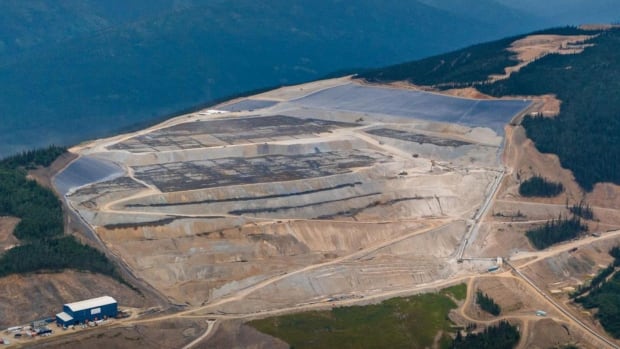
The Yukon government says “elevated” levels of cyanide have been found in a creek downstream from the Victoria Gold’s Eagle gold mine, following a heap leach failure and landslide at the facility.
Speaking at a media briefing Thursday morning, Energy, Mines and Resources Minister John Streicker said four water samples taken from different areas near the mine have come back positive for cyanide, but levels are mostly low.
Streicker said levels in Haggart Creek were 0.04 milligrams per litre, while testing in Dublin Gulch showed 0.001 milligrams per litre. “This level of cyanide in Haggart Creek could affect fish,” he said. “Fish toxicity testing is underway.”
Testing from the mine site itself showed high levels of cyanide, including 8.58 milligrams per litre at the bottom of the slide, he said.
Victoria Gold said in a news release Thursday morning, however, that its “continued environmental surface water quality sampling at multiple points downstream of the property has not detected any cyanide.”
Sudit Ranade, Yukon’s chief medical officer of health, said people should stay away from the “immediate vicinity” of Haggart Creek as precaution, and should not use it for recreation. But, Ranade noted, the creek’s water is not used as a drinking source.
“There really isn’t a concern there,” he said.
Still too early to understand cause of failure
The heap leach failure and resulting slide last week damaged infrastructure, halted operations and raised concerns cyanide could make its way into groundwater.
Streicker said samples will need to be taken in different locations to get “a clearer and clearer picture with more information.”
“It is too early to say what caused the heap leach failure,” he said.
Kelly Constable, the Yukon government’s director of mineral resources, said about four million tonnes of material were released in the slide, about two million of which escaped containment.
First Nation’s call to halt mining
Thursday’s briefing comes a day after Na-Cho Nyäk Dun First Nation called for a halt to all mining activities on their land.
When asked for his response to that call, Streicker said he’s met with the First Nation and heard their concerns.
“We will take time to think about it,” he said.
Streicker said it’s important that the mining company continue its work on site as the slide continues to be investigated. “You want Vic Gold to be doing that work right now,” he said.
Streicker also said the investigation, including testing, was disrupted by wildfires in the area. A fire near the mine cut power to the site at one point, and a generator was used instead.
There are about 60 essential workers left on site, Streicker said.
Potential for more sliding
Mark Smith, a heap leach analyst contracted by the Yukon government, said there is a risk the slide could move again.
The area of the mine gets about 100 millilitres of rainfall in the spring, he said. That’s “enough rainfall to make me worry about parts of the slide moving again,” Smith said.
Both Streicker and Smith said teams are meeting later on Thursday to come up with a plan to prevent that from happening, but that it’s difficult because people and equipment can’t go on the slide site itself because it’s too dangerous.
“Everybody is alive to that risk,” Smith said.